The Next Big Growth Surge
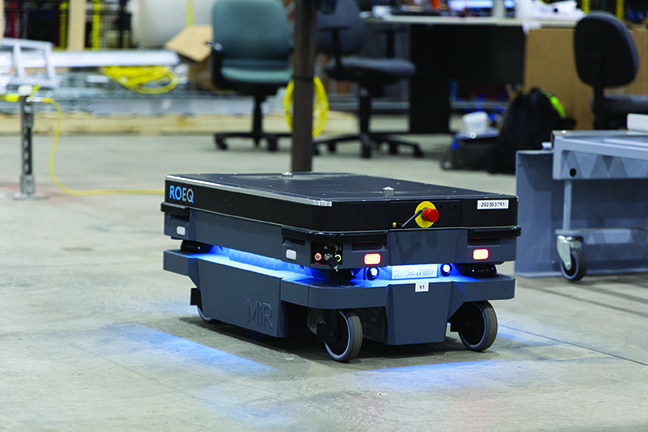 |
| IMR Type A is an Autonomous Mobile Robot (AMR) without any attachments needed. |
With mature sensing and vision technologies, robots keep adapting to the real world.
Early adopters of robotics recognized the advantages of the industrial arm and laid the groundwork for advances in this technology, according to Craig Salvalaggio, president and COO of AMT. Demand, he says, resulted in improvements in the industrial arm involving manipulation, communication, and cable management opening the door to new applications and industries.
“We can see similar trends happening right now with the growth of AMR and AGV technology,” he said. “As the technology matures and evolves it unlocks new capabilities. Once proven, it creates opportunities for the technology’s integration to grow at scale along with the market support systems around it.”
Currently, says Salvalaggio, the warehousing logistics markets are driving AMR and AGV technology growth. Companies are trying to minimize touchpoints on material movement within their facilities. AMR technology is serving to bridge gaps, by connecting islands of automated or non-automated equipment and processes. Even more opportunities and applications for material movement and machine tending arise with the combination of industrial and collaborative robots mounted on AMRs.
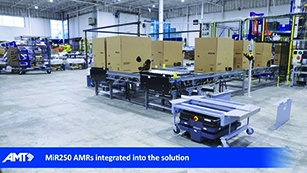 |
| Within an industrial environment, an AMR utilizes laser-based perception and navigation algorithms to dynamically move through facilities, infrastructure-free. |
“AMT works with many clients in the warehousing logistics space. While attending the large material handling show MODEX 2024, we saw a tremendous amount of proven technology for truck unloading. Robotic technology can be used to unload and singulate cases from a truck onto a conveyor system for material movement. This capability is enabled by vision and sensing technology. Mature sensing and vision technologies support the advanced trends we’re seeing today.
Responding to marketplace trends and customer demand, AMT is looking at the use of autonomous mobile robots as the next surge of technology and growth over the coming years, similar to industrial robots 30 years ago. According to Salvalaggio, the technology is at a point where it has tremendous potential for significant growth and it can be scaled in mass deployment. The required robustness and stability of the product, as well as stability within the market from a manufacturing perspective are all present to support that growth. Over the last couple of years, there have been numerous small deployments testing and benchmarking the technology.
“Two areas of growth include material movement line side and transport of materials from end-of-line directly to the warehouse,” he said. “We are also looking at the associated surrounding support systems, including charging, manipulators, attachments that sit on top of AMRs that transfer goods (sometimes referred to as top modules), as well as associated analytical software. Together, these comprise the supporting community of systems that must develop alongside the primary technology to grow at scale.”
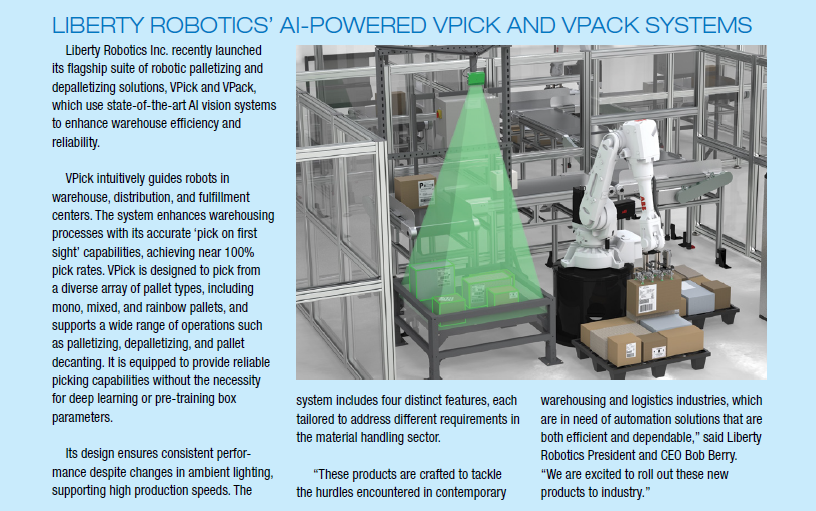 |
At AMT, the why comes before the what, and distributors can apply the logic with their customers who are exploring new levels of robotics in their businesses.
“From my perspective,” said Salvalaggio, “the purpose of including technology in a process is two-fold. First, remove humans from unsafe work environments where they are more likely to be injured. Second, increase their overall productivity so that everyone’s contribution to the organization continues to grow and the organization itself can continue to compete and scale. Whether it be manufacturing or distribution, greenfield or existing, the goal remains the same – increase human productivity by augmenting some of the tasks they do with automation, thereby making the organization as a whole more competitive.”
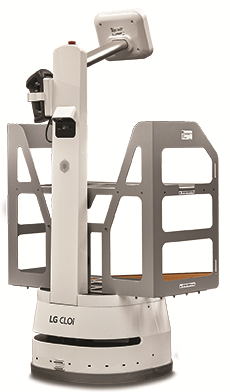 |
| LG CLOi CarryBot Mounting Type AMR |
AMT recently introduced a new standard robot cell design for the robotic induction of cases into a storage and retrieval system. The cell allows the warehouse to access new applications that augment and support their facility’s growth by automating the movement of cases into a storage system.
“It is our first standard cell design for that particular space, ultimately resulting in enhanced system productivity through increased throughput and case density,” said Salvalaggio. “It also removes workers from the task of lifting large heavy boxes in an unfriendly ergonomic environment.”
Technology and design are evolving – even today, most of the technology people are accustomed to interacting with today involves user interfaces and singletouch applications that are so intuitively easy to use that there’s no need for instruction manuals. “AMT is designing that same ease of use into industrial architecture by making our systems intuitively easy to use, maintain, and support,” said Salvalaggio. “That is accomplished through well designed software and user interfaces.”
Artificial Intelligence (AI) capable vision technologies are fostering tremendous improvements in AMT’s collective capability, he added. “Computation and sensing technologies are becoming much more intelligent. As an example, the use of generative AI and machine learning has allowed our systems to operate and handle products with a much larger SKU base than ever before. By combining storage, computational power, and advanced sensing technology, new applications for their collective use are unlocked. I expect tremendous growth in the spaces that combine intuitive user interfaces, AI-capable vision technologies, and AMRs for material movement at mass scale.”
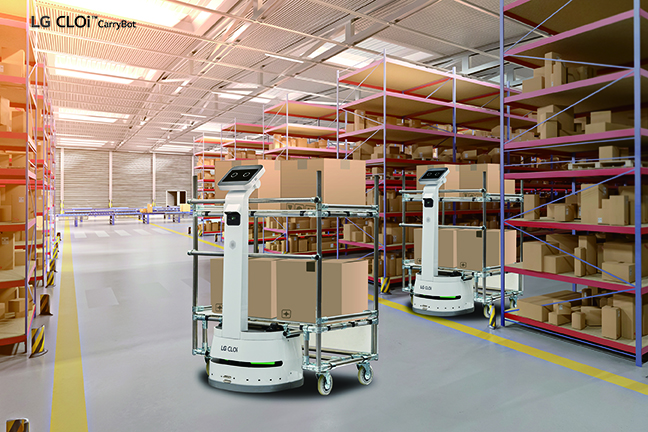 |
| LG CLOi CarryBots feature a Material Control System (MCS) that optimizes order distribution and scheduling and a Robot Management System (RMS) that provides information on the robots. |
LG BUSINESS SOLUTIONS
Warehouse operators are increasingly relying on robotics to increase efficiencies, says Michael Kosla, senior vice president, LG Business Solutions USA. The integration of robots in these environments enables workers to remain focused within their designated areas, consequently boosting productivity and reducing manual package transportation by workers.
He notes that the robotics market is currently being driven by several prominent trends that are shaping product development:
1) E-commerce growth: With the continuous expansion of e-commerce, Automated Mobile Robots (AMRs) are becoming increasingly essential in warehouse operations. AMRs play a crucial role in tasks such as picking, packing and sorting, enabling warehouses to meet the escalating demands of online shopping. The integration of more automation allows warehouses to effectively keep pace with the rapid growth of the market.
2) Scalability: AMRs offer a high degree of scalability, allowing them to seamlessly integrate into existing production and logistics environments without the need for extensive modifications to fixed infrastructure. This adaptability ensures that warehouses can efficiently accommodate changes in demand and operational needs, thereby enhancing overall flexibility.
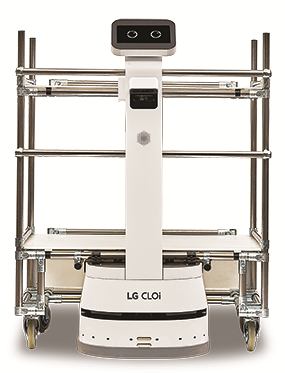 |
| LG CLOi CarryBot Rolltainer Type AMR |
3) Technological advancements: Advances in robotics technologies, including AI, sensors and computer vision, are driving the evolution of AMRs. These technological enhancements make AMRs more versatile and cost-effective across a broader spectrum of applications. By leveraging cutting-edge technologies, AMRs can deliver improved performance and efficiency in various warehouse tasks, contributing to enhanced operational effectiveness.
4) Labor shortages and workforce dynamics: AMRs address challenges related to labor shortages and the increasing value of worker wages in warehouse settings. Specifically, AMRs facilitate predictability and consistency in personnel forecasting, leading to reduced overtime costs and improved efficiency, particularly during peak seasons. And, by minimizing the need for manual labor in repetitive, low-value tasks, AMRs enhance workplace safety, and mitigate turnover rates. This, in turn, allows warehouse personnel to focus on higher-value tasks, optimizing workforce utilization and productivity.
LG Electronics has responded to the increasing demand for AMRs specifically designed for warehouse use cases with the launch of the new LG CLOi CarryBot family of AMRs. These robots are engineered to intelligently navigate intricate floor plans, and deliver payloads in customizable configurations, with loading and unloading performed by workers.
Kosla says the new LG CLOi CarryBot (unveiled at the MODEX 2024 trade show) is designed to provide fast, intelligent point-to-point delivery and reduce strain on warehouse workers. Featuring LG’s advanced AMR platform for autonomous navigation, the latest Wi-Fi capabilities, ergonomic hardware design, an intuitive fleet management system and an efficiency-boosting material control system that optimizes order distribution and scheduling, the LG CLOi CarryBot can streamline product movement and adjust to real-world situations while reducing physical strain on workers.
“With a top speed of 2.7 miles per hour, a typical runtime of 18.5 hours and autonomous dock charging in 6 hours, LG CLOi CarryBot is a powerhouse for delivering small-to-medium packages across virtually any distance,” said Kosla. “These powerful hardware capabilities combine with cutting-edge software and machine learning for seamless integration with various facets of Warehouse Management Systems, including material control, fleet management and robot management systems.
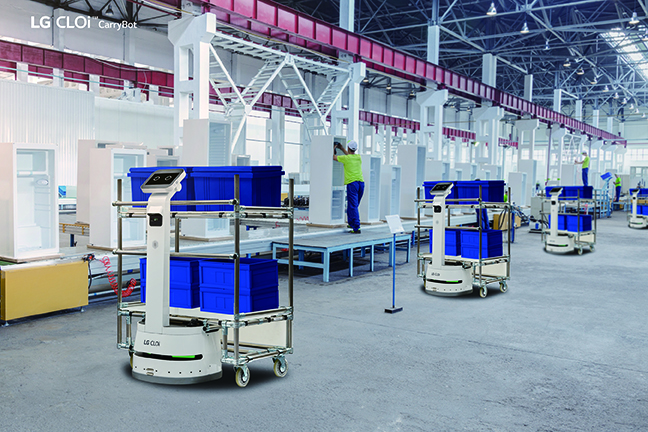 |
| These robots support efficient warehouse operation by using driving algorithm with the Fleet Management System (FMS) which enable the AMR to set the fastest route to the destination. |
Interfacing with material control systems enables smart order grouping, picking item categorization, order information distribution, and total picking cooperation support including notations of shortages or skipped items. Fleet management system integration provides path-planning for multi-AMR users, intelligent AMR fleet navigation and prioritization, traffic balancing and detouring, obstacle avoidance and automated return for dock charging. On the backend, the robot management system provides managers instant access to location info, AMR status, alerts for abnormal interactions and statistical data to support decision making.
The LG CLOi CarryBot can be programmed for virtually any floor plan with practically unlimited pickup and delivery points, enabling precise navigation, multipoint deliveries and AI-enhanced decision-making that streamlines deliveries when multiple AMRs are servicing a single zone. At the end of its “shift,” or when power is low, the LG CLOi CarryBot can automatically return to a designated multi-AMR charging dock.
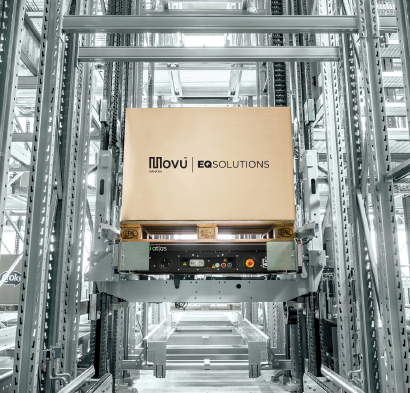 |
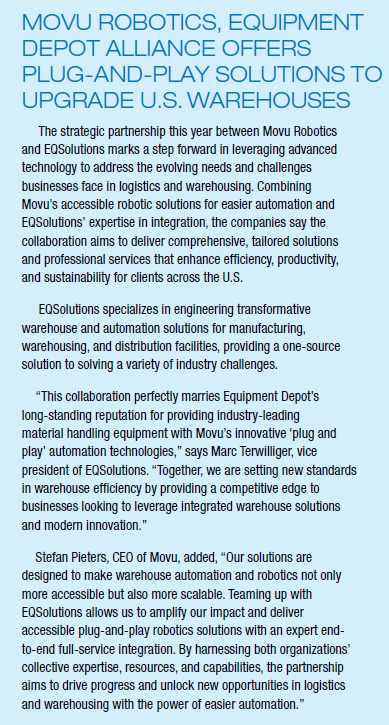 |
This article originally appeared in the May/June 2024 issue of Industrial Supply magazine. Copyright 2024, Direct Business Media.













